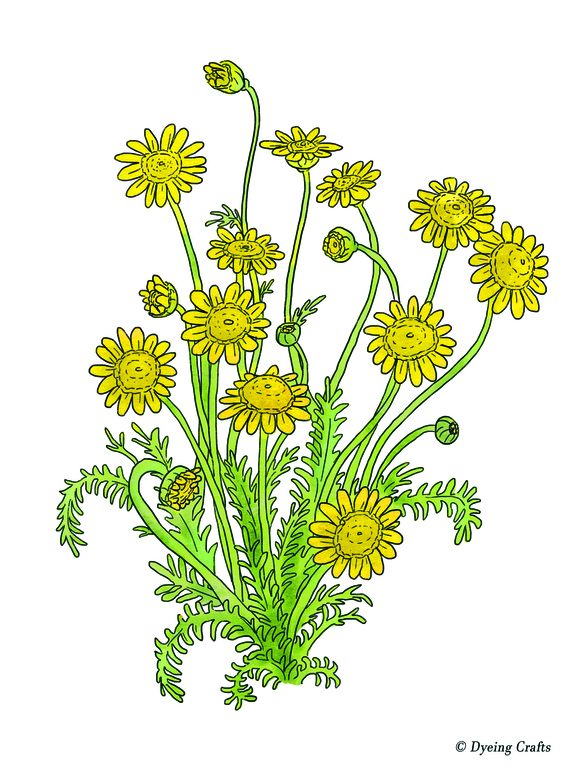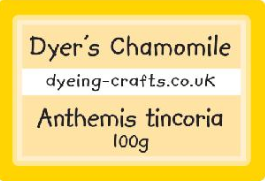Dye Seeds
THE NATURAL DYE GARDEN Natural dyes are both beautiful and aesthetically pleasing. A natural dye garden will give you eco-friendly, natural dye pigments for textiles and yarns, Natural dyes have a unique character – they shimmer beautifully in sunlight and never clash. Growing plants for dyeing is an ancient craft but it is making a comeback. As interest in eco-friendly products and methods grow – it is no surprise that many creative people are planting their own natural dye gardens today. If you are considering creating a dye garden aim by initially growing the three primary colours – blue, red and yellow – from these the full rainbow of beautiful colours will be available to you. Below are a selection of seeds/plants I grow which provide me with immeasurable pleasure – and I hope will inspire you! 18 varieties to choose from. Attractively packaged - making a special gift for the natural dyer.
ALKANET
Anchusa officinalis – ‘Alkanet’ or ‘Bugloss’ The bark of the roots yields a weak brownish-red or lilac dye. It is not as
-
£3.25Add to basket
CALENDULA OFFICINALIS
Calendula officinalis Also called pot marigold is often confused with members of the genus Tagetes which go by the same common name
-
£3.25Add to basket
DYER’S CHAMOMILE
Anthemis tinctoria Dyer’s Chamomile has been used for dyeing fibre for thousands of years. It provides the yellow and buff in Turkish carpets.
-
£3.25Add to basket
View all Dye Seeds>>>
Natural Dyes
I love working with natural dyes - keeping an ancient tradition - exploring natural colour and being close to nature. Many people don't ever consider that mass produced clothing dyed with synthetic dyes are dangerous for us and our environment. These chemicals pollute the air and waterways, they can irritate consumers skin - causing allergies and eczema. We can benefit from the healing properties of many plants in different ways - from herbal teas, culinary herbs and infusions and also by transferring plant properties onto our fabric. Making your own natural dyes at home can be done easily - it is so fascinating! If you are not able to grow your own plants for dyeing - below are a selection of natural dyes which will provide you with an amazing range of fantastic colours! All the instructions can be found on our HOW TO pages in the main menu above. Just scroll down the menu to find your selected dye.
ALKANET
Alkanna tinctoria or dyer’s alkanet is a very attractive purple colourant found in the roots of plants belonging to the borage family.
-
£6.00Add to basket
COCHINEAL
Cochineal is a potent natural dyestuff that is derived from the crushed, dried bodies of the female cochineal bug – a scale
-
£8.50Add to basket
DYER’S CHAMOMILE
Dyer’s Chamomile – Anthemis tinctoria A short lived perennial herb with aromatic, silver green, feathery foliage. Dyer’s chamomile was used in Medieval
-
£6.00Add to basket
View all Natural Dyes>>>
Madder Rhizomes
Madder Rubia Tinctorum – also called Turkey Red The roots of this ancient plant are rich in red alizarin and are the source of a strong red dye. The uniforms of the British Red Coats were dyed with madder root. It is a perennial plant growing to a height of approximately 100cm. It has slender, jointed stems which are covered with short prickly leaves. The flowers are small green/yellow and bell shaped. In the late autumn the seeds turn black and dry out to resemble black peppercorns. Madder can be propagated from seed, root and shoot divisions. 10 madder rhizomes EACH 4 - 6 INCHES IN LENGTH approx weight 400g.
MADDER RHIZOMES
10 MADDER RHIZOMES EACH 4 – 6 INCHES IN LENGTH – £12.00 Approx weight 400g Rubia tinctorum The roots of this ancient
-
£12.00Add to basket
View all Madder Rhizomes>>>
Fibres
As alpacas become more and more well known across the world, their popularity is growing for various reasons. As livestock, as hobby farm pets and as therapy animals they shine. However, the most important role alpacas fulfill is undoubtedly as a source of some of the most outstanding natural fibre available. There are many benefits relating to alpaca fibre:- The fibre is exceptionally soft and has a very fine diameter. It has a reputation for being lovely and warm in the winter yet cool in the summer. It is beautiful to spin and knit with. It felts well. It takes natural dyes amazingly well. Try it and see for yourself!
ALPACA FIBRE
Alpaca fibre is 3 times warmer than wool. It is lightweight soft and luxurious. Takes natural dye very well. It is a
-
£4.00Add to basket
View all Fibres>>>













